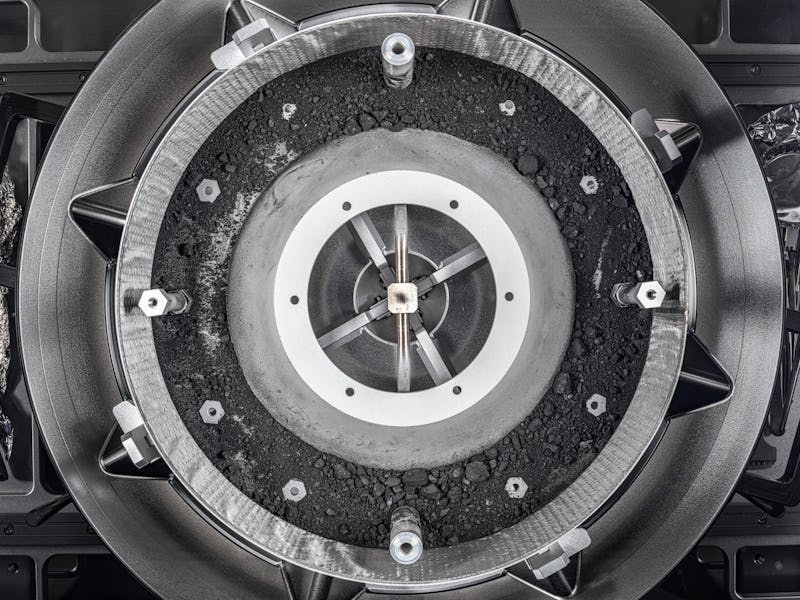NASA Finally Pried Open Stuck Space Capsule Revealing 4.5 Billion-Year-Old Asteroid Sample
Hidden Bennu samples have finally emerged.

Dark and precious asteroid dirt spent months lying hidden inside the confines of a capsule — but it has finally emerged.
Last September, NASA’s OSIRIS-REx mission returned from a flyby with asteroid Bennu, where it made history on October 20, 2020, when it collected the space agency’s first-ever samples from an asteroid. The spacecraft had funneled samples into a capsule which mission scientists planned to open and analyze the inner contents once it was back on Earth. But they ran into a slight problem: Two stubborn fasteners wouldn’t budge from the head of an instrument inside the capsule called TAGSAM (short for Touch and Go Sample Acquisition Mechanism).
Officials at NASA’s Johnson Space Center in Houston have spent the past several months designing new tools to access the goods inside. On January 11, NASA announced that they had finally pried the pair of pesky fasteners off.
The new tools designed to open the device “include newly custom-fabricated bits made from a specific grade of surgical, non-magnetic stainless steel,” NASA officials wrote in the update. It’s “the hardest metal approved for use in the pristine curation gloveboxes,” the update said.
Now, this past Friday, officials announced they had successfully opened the capsule and shared an image of the asteroid material. The blackish material harvested from Bennu, a small, carbon-rich, near-Earth asteroid, is ripe for scientific investigations about the origins of the Solar System and possibly life, too.
A view of the outside of the OSIRIS-REx sample collector.
Asteroid Souvenirs
In a pleasant surprise, the capsule ferried back more dirt than planned. Even before TAGSAM’s head was pried open, curators had access to more than 70 grams of extra material curators found on the outside of the sampler head.
Now, the next steps are weighing the material, cataloging, and ultimately, sharing the sample profiles with scientists and institutions around the world for experiments.
Meanwhile, OSIRIS-REx is now on its way to its next asteroid target, Apophis, which it will reach in April 2029.
This article was originally published on